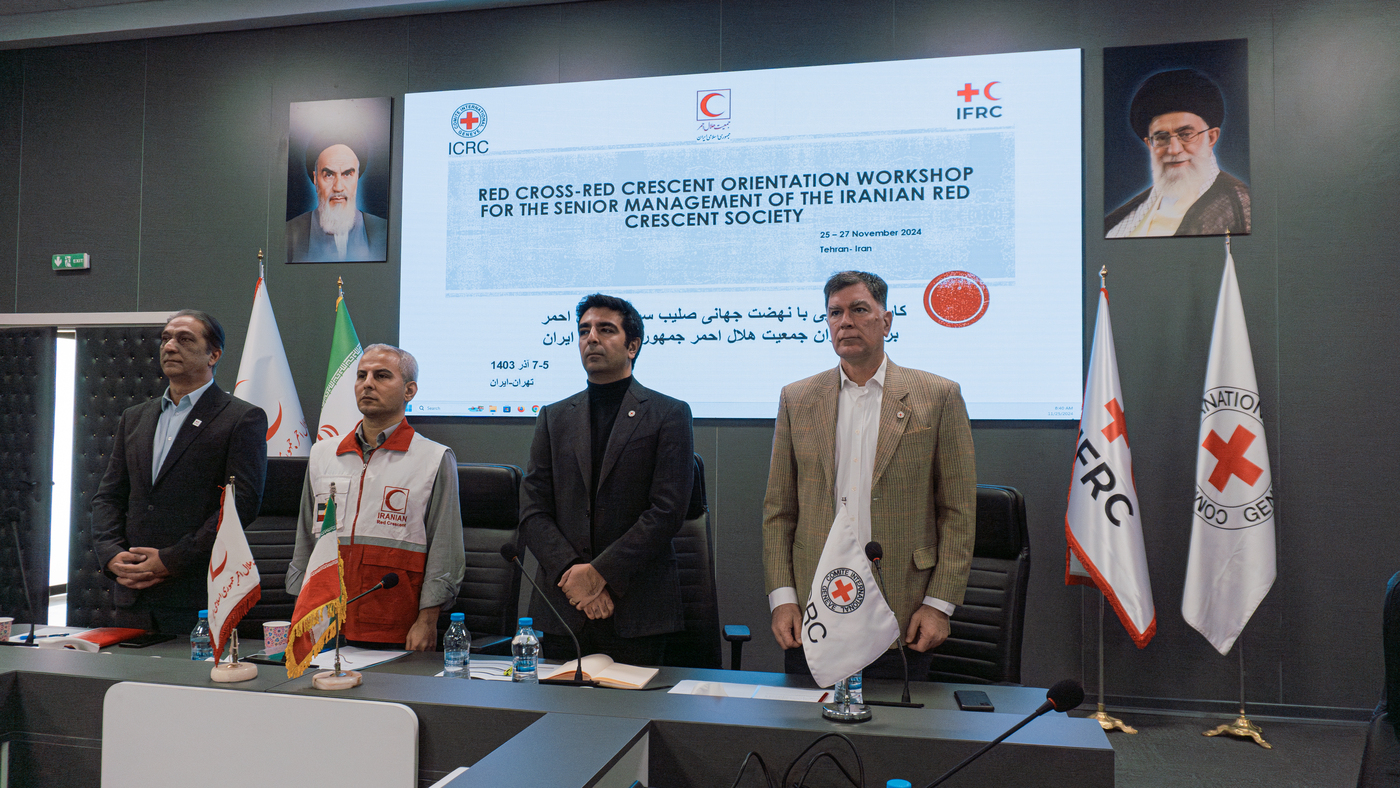ICRC (Tehran) – The Iranian Red Crescent Society (IRCS), in collaboration with the International Committee of the Red Cross (ICRC) and the International Federation of Red Cross and Red Crescent Societies (IFRC), held a three-day orientation workshop for its middle management From November 25 to 27, 2024.
This event was designed to strengthen cooperation, coordination, and collaboration within the Red Cross and Red Crescent Movement in Iran while providing participants with the knowledge and tools necessary to adapt to evolving humanitarian landscape, needs, and operational toolkits.

A key focus of the workshop was on fostering stronger collaboration between Movement components, ensuring alignment in strategy and action while addressing common challenges.
By creating a platform for open dialogue and shared learning, the workshop underscored the importance of unity in achieving the Movement’s mission of alleviating human suffering and promoting peace.
In her message to opening ceremony, Ms. Alishavandi, Under Secretary General for International Affairs & IHL, said that the Red Cross & Red Crescent Movement is organized to fulfill humanitarian goals and is currently working to address such concerns as peace, climate change, development, and other concerns.
During the opening ceremony, Mr. Vincent Cassard, Head of the ICRC Delegation in Iran, remarked, “This workshop, organized in partnership between the Iranian Red Crescent Society, the International Federation of Red Cross and Red Crescent Societies, and the International Committee of the Red Cross, reflects the strength of our Movement’s collective commitment to our shared mission: to alleviate human suffering, protect life and dignity, and promote lasting peace.”
The Head of the IFRC Delegation in Iran, Mr Faisal Mahboob, highlighted the value of collaboration, stating, “By joining forces through these trainings, we amplify our strengths, expand our reach, and ensure that our work is more effective and impactful.”
The workshop addressed a wide range of topics, including an introduction to the history and structure of the Red Cross and Red Crescent Movement, an overview of International Humanitarian Law (IHL), and an in-depth exploration of the Movement’s coordination mechanisms.

Participants also examined the roles and responsibilities of Movement components, the Fundamental Principles, and the Seville Agreement 2, which outlines the framework for collaboration and coordination within the Movement.
These discussions aimed to provide participants with a comprehensive understanding of the Movement’s operational and governance structures, equipping them to navigate the complexities of humanitarian action more effectively.
Participants also examined the roles and responsibilities of Movement components, the Fundamental Principles, and the Seville Agreement 2, which outlines the framework for collaboration and coordination within the Movement.



Comments